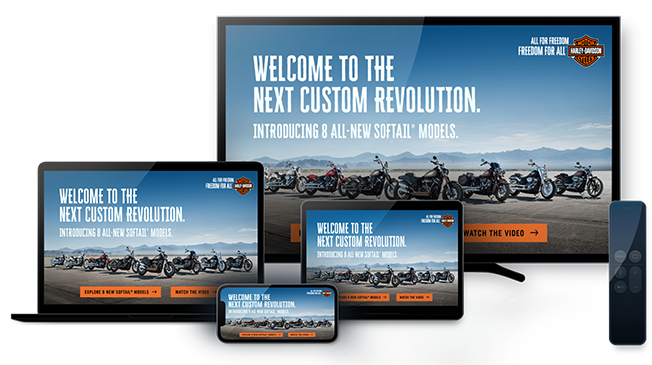How to Bridge the Gap Between Creative and Programmatic

The Cannes Lions International Festival of Creativity is all about honoring, well, creativity. But over the past decade, the presence of machine learning, programmatic ad tech, and AI has become unavoidable there.
Last year, one estimate put 85% of Cannes participants as being ad tech companies, up from 60% just a few years ago. This year, while the complaints about programmatic firms more or less invading the festival on yachts may have quelled a bit (in part because construction meant far fewer yacht parties than usual), the debate over their presence at Cannes has taken on a new flavor thanks to the rise of generative AI. Automation in advertising is now about much more than buying and selling – it’s now an existential crisis for creatives, many of whom see their jobs threatened by the march of automation.
So, amid this, the word “programmatic” can take on an ominous new meaning. Should it?
On an Infillion-hosted panel in Cannes, “Why Programmatic Shouldn’t Be A Dirty Word For Creatives,” a set of leaders from across the digital advertising spectrum addressed the controversy head-on. “Is it a fear of programmatic? Is it a lack of education? Is it a lack of showing the success stories and how it can actually help them?” moderator Sinead Fox, partner at Bain, asked the panelists.
As it turns out, it’s a combination of all that. And the onus is on ad tech to create clearer communication.
- The acronyms aren’t helping. Digital ad tech, for one, isn’t doing itself any favors in the rest of the industry by making its offerings so difficult to understand.
“It’s really hard to figure out the ecosystem of programmatic,” said Cynthia Clevenger, SVP of B2B marketing at ad-supported streaming service Tubi, one of the few companies that can both say it builds programmatic ad tech while also winning top awards at Cannes for its brand creative. “There are a lot of players. There are a lot of acronyms. So I get when you hear that word [“programmatic”], a lot of people who have been around in the industry, they do have that visceral reaction.”
What this leads to is the perception, for example, that certain forms of automation and AI are newer and more intimidating than they actually are. “Clients are asking a lot of different questions,” said Dave Kersey, chief media officer at GSD&M, an Omnicom-owned full service agency that manages both creative and media work for clients. “One of our clients asked us what our POV is on AI and we said, ‘We’ve been using it for you for 12 years through machine learning.’” - Creatives care about more than efficiency. Pirouz Nilforoush, president and co-founder of inPowered AI, pointed out that programmatic ad tech spends too much time talking about numbers. “It’s all about performance,” he said. “Creatives want to create more engaging experiences, and all this focus on the attribution for the ads and performance I think has created that perception [that the two sides are at odds].”
In reality, performance can and should be driven by human creativity itself in addition to the technology that powers advertising.
“You think about the first generation of programmatic and its emphasis on automation and efficiency and performance and optimization – sometimes I think of it as very left-brained,” said Marcos Escalante, chief product officer at Infillion. Then there’s “the emotion. That’s the creative. That’s really pulling that out, and it drives performance.” With generative AI entering the conversation, giving creative its credit in advertising’s impact is even more important.
- Emphasize what automation can do to enhance creativity. The message that ad tech needs to bring to creatives: We’re here to help you do your jobs better. Multiple panelists brought up AI’s ability to be “a first draft,” to test out new concepts and audience feedback so that creatives can be better equipped and more informed. “Clients can save more, and we can get to market quicker and make decisions faster,” said Dave Kersey of GSD&M. “Ultimately programmatic is just pipes to get activation out the door quickly.”
There’s more, too. As an example, Cynthia Clevenger of Tubi brought up localization of ads, in which generative AI and programmatic deployment can help a message reach audiences that it wouldn’t have been able to otherwise. “There are cultural nuances that you cannot get from a machine, but there are ways in which we can do translation that’s much easier, tone much easier, and that’s what I think is really exciting,” she said.
“An algorithm does not bring heart to the table,” said Chrysi Philalithes, who recently took on a leadership role at the Ryan Reynolds-founded creative agency Maximum Effort. “But it does bring efficiencies to the table.”
Collaborate, collaborate, collaborate
When it comes to team structures and communication, keeping programmatic (or media) and creative teams in close proximity can help bridge divides. “Try as much as possible to foster collaborative environments and not make programmatic this scary thing,” said Pirouz Nilforoush when asked about the advice he’d give to the industry.
At Infillion, tech and creative teams routinely meet to sync on campaigns that are running and how both teams can optimize them. “When we do a weekly review of campaigns in performance, [we] come up with actions and insights that probably couldn’t have come from other teams,” Marcos Escalante said.
In summary, the gulf between creative and tech doesn’t have to exist. “It doesn’t have to be this either-or. Why are we setting it up as an either-or?” suggested Chrysi Philalithes. “As a marketer I really believe in how the medium is the message, so let’s look at [programmatic] as the medium that can deliver the message.”
Learn more about Infillion’s award-winning work with this rundown of recent wins from our Creative Strategy team.
Subscribe to our blog:
Related Posts:

How Real Attention Stops Ad Fraud in Its Tracks
Imagine you’re sitting at a nice table in your favorite restaurant. You order a meal—pricy but worth it—and get ready to dig in. The server brings you your dinner…and it’s missing an entire side dish. “Excuse me,” you might say. “Where is the rest of my food?” “Ah!...

The Best Way to Honor Hispanic Heritage Month? Learn what ‘Hispanic’ Means
Hispanic Heritage Month in the United States runs from September 15 to October 15 each year. The half-month-to-half-month structure might seem peculiar, but the reason for this is that these dates overlap with the independence celebrations of a number of Hispanic...

The GLP-1 Revolution: An Infillion Refresher
The rise of GLP-1 medications (like Ozempic and Mounjaro) for weight loss has kicked off a modern wellness revolution – one so widespread that “everyone and their moms” seem to be talking about it. Far from a passing fad, these drugs are reshaping consumer behavior...
Let's Connect

